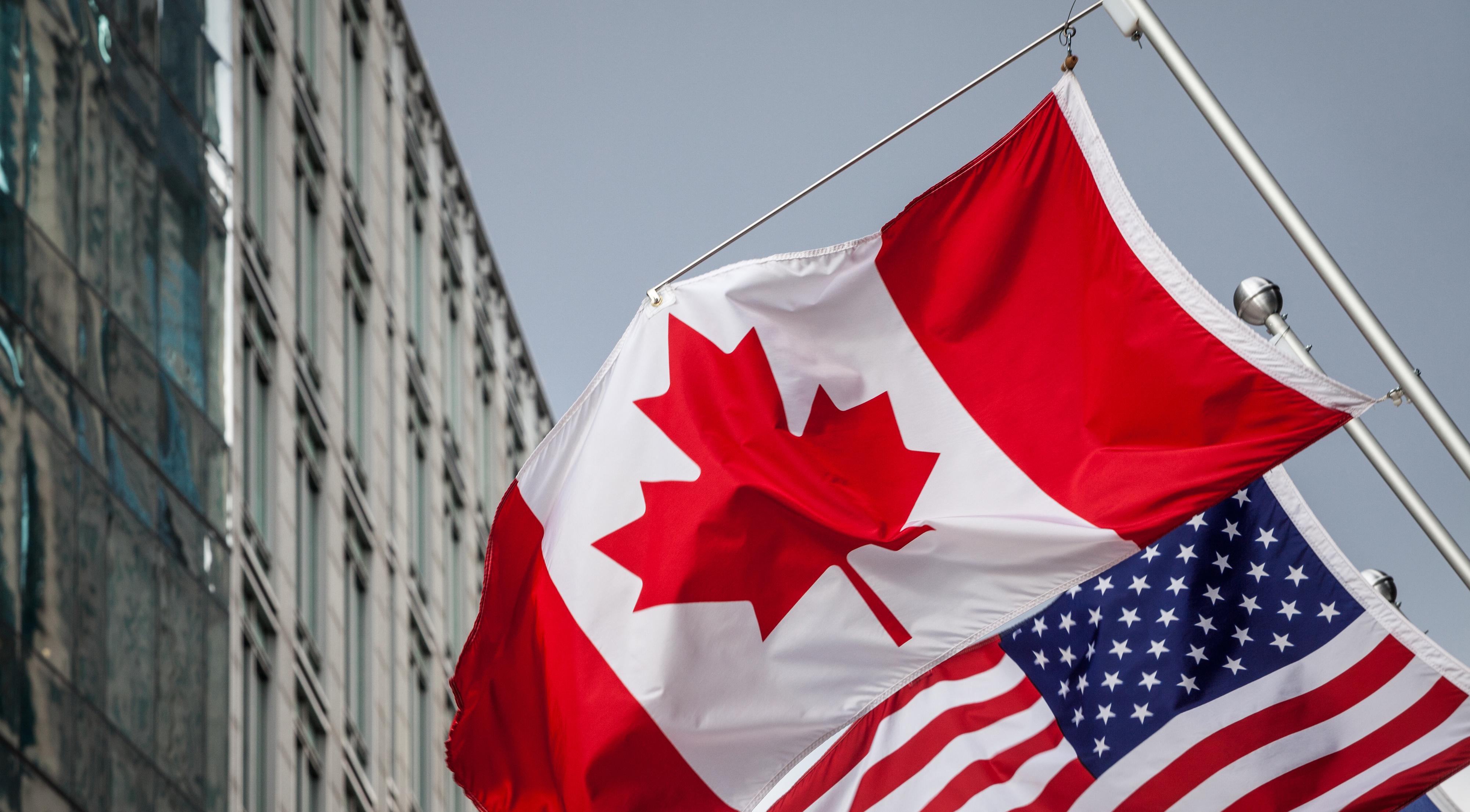
Eyes on Canada after U.S. Downgrade
-
bookmark
-
print

- Keywords:


Fitch downgraded the United States’ credit rating to AA+ from AAA, somewhatof a surprise move, yet, not all that surprising. One doesn’t need to be a raging fiscal hawk to sense that running deficits in excess of 8% of GDP, at the top of the business cycle, is not the most prudent course. Fitch noted a number of factors to justify its move, including an erosion of governance, rising deficits, a growing debt burden and medium-term challenges that persistently go unaddressed. One question that has come up: where does this leave Canada? Fitch already downgraded Canada during the height of the pandemic in 2020 (to AA+), while the other big-three rating agencies still rate Canada triple-A with a stable outlook. In absolute terms, fiscal hawks havebeen sitting a bit uneasy in Canada alongside large-scale pandemic-era support, a continuous flow of new program spending and a rising tax burden. But, in relative terms, Canada looks downright responsible when set against the U.S. performance.Governance remains an issue in the U.S., as highlighted by the recent debt limit standoff. While an agreement was reached to suspend the debt limit until January 2025, this is viewed by many as just kicking the can a bit further down the road, yetagain. Indeed, the initial credit rating downgrade by S&P in 2011 similarly centred around a debt-limit standoff. In Canada, there is no such explicit borrowing limit, so most governance issues revolve around party control and their ability to form and maintain government. In the current minority government, the Liberals have support from the NDP until 2025 which has helped keep policy predictable.
Drilling into the core of the issue, deficits and stimulus spending in Canada still pale in comparison to south of the border. Make no mistake, recent policy settings in Ottawa have been fully geared toward higher program spending, somewhat higher taxes and persistent deficits. In fact, in the latest 12 months, federal program spending sat a hefty 31% above pre-COVID levels even as temporary relief measures have rolled off, or fully 2 ppts higher as a share of GDP. But, again, it’s all relative: U.S. non interest outlays now sit more than 40% above pre-COVID levels. While Canada was a big spender through the pandemic via various support programs, the U.S. ran an even more aggressive program, and that has continued into this year. Consider that stimulus in the 2023 budget, Canada’s response to the U.S. Inflation Reduction Act, totalled $43 billion over six years, or roughly 0.2% of GDP per year—meaningful from a deficit perspective, but small-time in comparison. Indeed, Canada’s budget deficit is projected to shrink gradually from 1.4% of GDP this year to 0.4% by FY27/28 and, while Ottawa’s reluctance to show a balanced budget is an ongoing criticism of the hawks, the reality is the shortfalls remain manageable.
Meantime, Canada’s debt burden has risen notably in recent years as the federal government absorbed the vast majority of pandemic-related spending and borrowing. But, on a relative basis, Canada’s burden remains low; and at 43.5%, the federal debtto-GDP ratio is expected to peak this year before fading below 40% in FY27/28. Interest costs are creeping up as they are globally, which will likely bite into discretionary program spending, but the starting point is a favourable 8% of revenues—Canadawas north of 30% on this metric when it faced widespread downgrades in the early 1990s. At the same time, provincial government budgets are largely balanced,and combined provincial net debt has fallen below 30% of GDP. While there is ongoing pressure to increase federal provincial transfers for areas such as health.
Our Thoughts care, the provincial fiscal situation is such that it shouldn’t require any unpredictable federal support in the foreseeable future. Finally, Fitch highlights medium-term stress in areas like U.S. Social Security funding, which is expected to be depleted by 2033. Canada doesn’t face the same stress, in part because of gradual increases in contribution rates. All told, we wouldn’t go so far as to say everything is rosy in Canada from a fiscal perspective, especially when the desire to spend and run deficits meets a sharply higher interest rate environment. But, on a relative basis, the U.S. is setting a pretty low comparison bar to step over.
Robert has been with the Bank of Montreal since 2006. He plays a key role in analyzing economic, fiscal and real estate trends in Canada. Robert regularly contribut…(..)
View Full Profile >Fitch downgraded the United States’ credit rating to AA+ from AAA, somewhatof a surprise move, yet, not all that surprising. One doesn’t need to be a raging fiscal hawk to sense that running deficits in excess of 8% of GDP, at the top of the business cycle, is not the most prudent course. Fitch noted a number of factors to justify its move, including an erosion of governance, rising deficits, a growing debt burden and medium-term challenges that persistently go unaddressed. One question that has come up: where does this leave Canada? Fitch already downgraded Canada during the height of the pandemic in 2020 (to AA+), while the other big-three rating agencies still rate Canada triple-A with a stable outlook. In absolute terms, fiscal hawks havebeen sitting a bit uneasy in Canada alongside large-scale pandemic-era support, a continuous flow of new program spending and a rising tax burden. But, in relative terms, Canada looks downright responsible when set against the U.S. performance.Governance remains an issue in the U.S., as highlighted by the recent debt limit standoff. While an agreement was reached to suspend the debt limit until January 2025, this is viewed by many as just kicking the can a bit further down the road, yetagain. Indeed, the initial credit rating downgrade by S&P in 2011 similarly centred around a debt-limit standoff. In Canada, there is no such explicit borrowing limit, so most governance issues revolve around party control and their ability to form and maintain government. In the current minority government, the Liberals have support from the NDP until 2025 which has helped keep policy predictable.
Drilling into the core of the issue, deficits and stimulus spending in Canada still pale in comparison to south of the border. Make no mistake, recent policy settings in Ottawa have been fully geared toward higher program spending, somewhat higher taxes and persistent deficits. In fact, in the latest 12 months, federal program spending sat a hefty 31% above pre-COVID levels even as temporary relief measures have rolled off, or fully 2 ppts higher as a share of GDP. But, again, it’s all relative: U.S. non interest outlays now sit more than 40% above pre-COVID levels. While Canada was a big spender through the pandemic via various support programs, the U.S. ran an even more aggressive program, and that has continued into this year. Consider that stimulus in the 2023 budget, Canada’s response to the U.S. Inflation Reduction Act, totalled $43 billion over six years, or roughly 0.2% of GDP per year—meaningful from a deficit perspective, but small-time in comparison. Indeed, Canada’s budget deficit is projected to shrink gradually from 1.4% of GDP this year to 0.4% by FY27/28 and, while Ottawa’s reluctance to show a balanced budget is an ongoing criticism of the hawks, the reality is the shortfalls remain manageable.
Meantime, Canada’s debt burden has risen notably in recent years as the federal government absorbed the vast majority of pandemic-related spending and borrowing. But, on a relative basis, Canada’s burden remains low; and at 43.5%, the federal debtto-GDP ratio is expected to peak this year before fading below 40% in FY27/28. Interest costs are creeping up as they are globally, which will likely bite into discretionary program spending, but the starting point is a favourable 8% of revenues—Canadawas north of 30% on this metric when it faced widespread downgrades in the early 1990s. At the same time, provincial government budgets are largely balanced,and combined provincial net debt has fallen below 30% of GDP. While there is ongoing pressure to increase federal provincial transfers for areas such as health.
Our Thoughts care, the provincial fiscal situation is such that it shouldn’t require any unpredictable federal support in the foreseeable future. Finally, Fitch highlights medium-term stress in areas like U.S. Social Security funding, which is expected to be depleted by 2033. Canada doesn’t face the same stress, in part because of gradual increases in contribution rates. All told, we wouldn’t go so far as to say everything is rosy in Canada from a fiscal perspective, especially when the desire to spend and run deficits meets a sharply higher interest rate environment. But, on a relative basis, the U.S. is setting a pretty low comparison bar to step over.
What to Read Next.
Housing Shrugs Off Another Hike...So Far
Shelly Kaushik | July 20, 2023 | Commercial Real Estate

The housing market continued to recover even after the Bank of Canada came off the sidelines and resumed raising rates in June. Existing home sa…
Continue Reading>Related Insights
Tell us three simple things to
customize your experience






Banking products are subject to approval and are provided in Canada by Bank of Montreal, a CDIC Member.
BMO Commercial Bank is a trade name used in Canada by Bank of Montreal, a CDIC member.
Please note important disclosures for content produced by BMO Capital Markets. BMO Capital Markets Regulatory | BMOCMC Fixed Income Commentary Disclosure | BMOCMC FICC Macro Strategy Commentary Disclosure | Research Disclosure Statements
BMO Capital Markets is a trade name used by BMO Financial Group for the wholesale banking businesses of Bank of Montreal, BMO Bank N.A. (member FDIC), Bank of Montreal Europe p.l.c., and Bank of Montreal (China) Co. Ltd, the institutional broker dealer business of BMO Capital Markets Corp. (Member FINRA and SIPC) and the agency broker dealer business of Clearpool Execution Services, LLC (Member FINRA and SIPC) in the U.S. , and the institutional broker dealer businesses of BMO Nesbitt Burns Inc. (Member Canadian Investment Regulatory Organization and Member Canadian Investor Protection Fund) in Canada and Asia, Bank of Montreal Europe p.l.c. (authorised and regulated by the Central Bank of Ireland) in Europe and BMO Capital Markets Limited (authorised and regulated by the Financial Conduct Authority) in the UK and Australia and carbon credit origination, sustainability advisory services and environmental solutions provided by Bank of Montreal, BMO Radicle Inc., and Carbon Farmers Australia Pty Ltd. (ACN 136 799 221 AFSL 430135) in Australia. "Nesbitt Burns" is a registered trademark of BMO Nesbitt Burns Inc, used under license. "BMO Capital Markets" is a trademark of Bank of Montreal, used under license. "BMO (M-Bar roundel symbol)" is a registered trademark of Bank of Montreal, used under license.
® Registered trademark of Bank of Montreal in the United States, Canada and elsewhere.
™ Trademark of Bank of Montreal in the United States and Canada.
The material contained in articles posted on this website is intended as a general market commentary. The opinions, estimates and projections, if any, contained in these articles are those of the authors and may differ from those of other BMO Commercial Bank employees and affiliates. BMO Commercial Bank endeavors to ensure that the contents have been compiled or derived from sources that it believes to be reliable and which it believes contain information and opinions which are accurate and complete. However, the authors and BMO Commercial Bank take no responsibility for any errors or omissions and do not guarantee their accuracy or completeness. These articles are for informational purposes only.
Bank of Montreal and its affiliates do not provide tax, legal or accounting advice. This material has been prepared for informational purposes only, and is not intended to provide, and should not be relied on for, tax, legal or accounting advice. You should consult your own tax, legal and accounting advisors before engaging in any transaction.
Third party web sites may have privacy and security policies different from BMO. Links to other web sites do not imply the endorsement or approval of such web sites. Please review the privacy and security policies of web sites reached through links from BMO web sites.
Please note important disclosures for content produced by BMO Capital Markets. BMO Capital Markets Regulatory | BMOCMC Fixed Income Commentary Disclosure | BMOCMC FICC Macro Strategy Commentary Disclosure | Research Disclosure Statements





